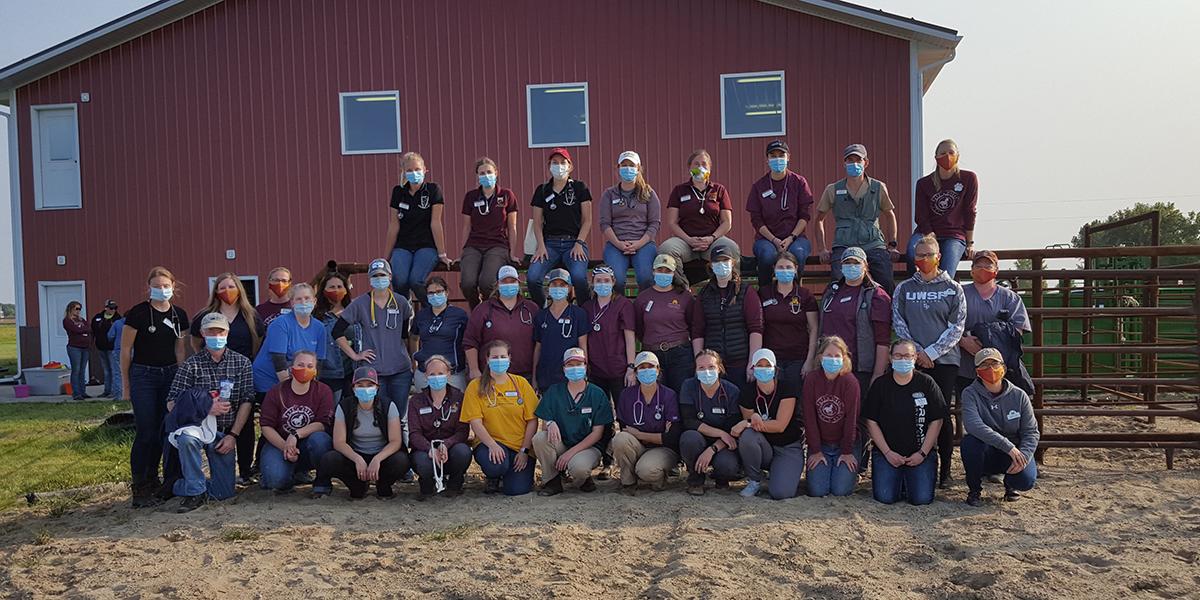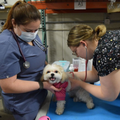On a fall day for the past several years, around 30 students and staff members from the College of Veterinary Medicine have packed up a caravan of cars and made a 3.5-hour drive north to Hawley, Minn. There, the group converges with another set of volunteers headed by Sarah Lee, ’02 DVM, who owns Lee Veterinary Clinic and organizes an annual free castration clinic for horses.
The castration clinic provides a vital service for horse owners in and around Clay County and a valuable opportunity for veterinary students to get hands-on experience performing surgery. Castration, also known as gelding, is a surgery that involves removing a male horse’s testicles. This prevents unwanted breeding and often results in a calmer temperament for the horse.
“If we did this on campus, it would mean owners have to bring their horses into the city, which is not an easy ask,” says Erin Malone, DVM, PhD. “We go to the horses. In their third year, students are learning about castration and post-operative care. This reinforces their learning and lets them apply new skills and knowledge right away.”
Malone, a professor in the Department of Veterinary Population Medicine, and any accompanying faculty members oversee the students as they complete the surgeries. They are joined onsite by staff from Lee’s clinic and other area and alumni veterinarians, who attend to help supervise students and lend a hand when needed. The students are divided into teams and typically castrate around 30 horses during the daylong clinic.
It’s a really good experience for them because they get to do a lot. They have to figure out the catheters, the anesthesia, the surgery, patient monitoring—really a lot of different things.
Sarah Lee, ’02 DVM
“It’s a really good experience for them because they get to do a lot,” Lee says. “They have to figure out the catheters, the anesthesia, the surgery, patient monitoring—really a lot of different things.”
This year’s clinic took place on Saturday, Sept. 19 and required an extra set of precautions to keep staff, students, and clients safe in the midst of the COVID-19 pandemic. All individuals present were required to wear masks and students only worked with classmates that are part of their pod—a small group that students have been organized into as part their educational track.
Preparations for the fall event, typically held in September, begin in May. The Veterinary Population Medicine Department purchases supplies while Lee and her staff provide the location and fundraise to defray other costs associated with the event. Transportation costs, food, and lodging are also part of the equation. All of these efforts culminate in a nine-hour day of surgeries—a worthwhile effort according to those involved.
This happens because of everyone’s dedication and hard work.
Erin Malone
“This happens because of everyone’s dedication and hard work,” Malone says. “We probably are saving horse lives. And hopefully recruiting future horse vets, but at the very least we’re ensuring that our students are more confident and competent when they graduate.”




